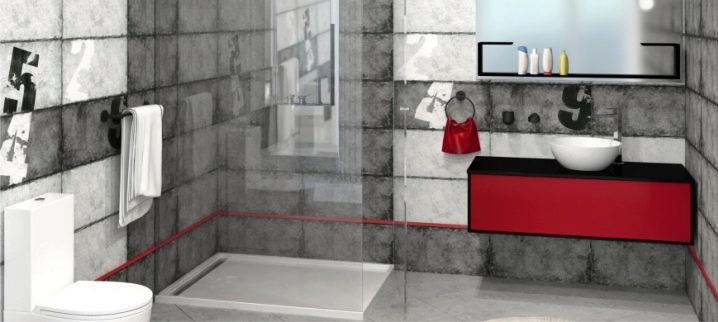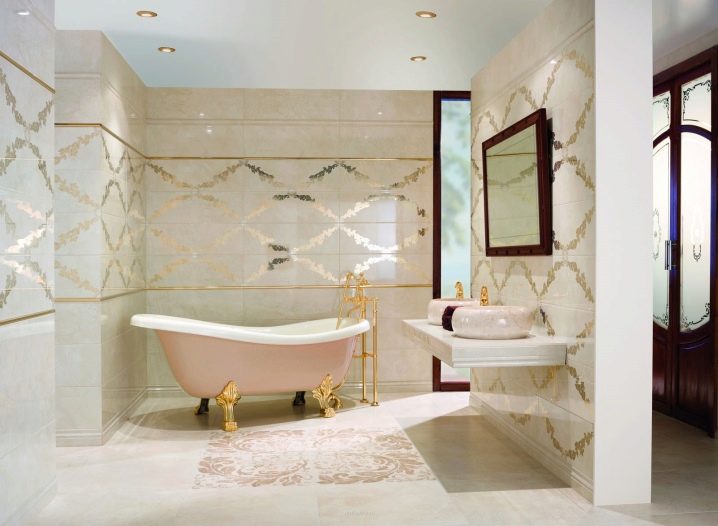Ceramic tiles size 30x60: features of choice

Ceramic wall tiles are rightfully considered one of the most favorite finishing materials among interior designers. And this is not without reason, because this type of cladding is a strong and durable material. Wall tiles, in addition to the fact that they perfectly fit into the design of any room, are resistant to temperature and humidity changes, and, importantly, they are very easy to care for. If you decide to use this particular material for repairs in your home, then, most likely, you will be faced with the difficult task of choosing the right tile, since today manufacturers offer us a huge number of samples of tile for walls.


Standard sizes
The size of the tile is one of the most important parameters, which many, unfortunately, do not give due attention to in the selection process. Most often, the facing material is chosen according to the colors and patterns that are suitable for a specific interior, without really wondering how to lay it. But inattention to the size can lead to the fact that in the process of repair the tiles will have to be broken or cut, adjusting to the size of the room, as a result of which sloppy joints can greatly worsen the appearance of your interior.


Even at the planning stage, it is very important to accurately measure the area premises and calculate the optimal tile size required for cladding, according to the chosen laying scheme. To meet all consumer needs in cladding formats, modern manufacturers produce tiles in a variety of sizes. Wall tiles can be either square or rectangular.


The most popular sizes of square ceramic tiles are:
- 10x10 cm
- 15x15 cm
- 20x20 cm



Such tiles are most convenient for wall cladding in small spaces, in small kitchens, bathrooms and toilets. In spacious rooms, rectangular tiles will look much better.
The most popular sizes of this type are the following traditional parameters:
- 10x20 cm
- 20x30 cm
- 25x40 cm
- 20x50 cm
- 30x60 cm




Selection Tips
When purchasing tiles in a store, you need to know about one important fact, with which most ordinary buyers are often completely unfamiliar. Remember that the standard tile sizes that are indicated by the manufacturer of the product may not correspond to the actual dimensions of the tiles in the package. The error in the dimensions of the facing material can be from five to seven millimeters in one direction or another.

According to international standards, these discrepancies are acceptable norms. They are caused by some of the features inherent in such natural raw materials as clay, from which tiles are made. During the firing process, this material can shrink or expand depending on the feedstock and temperature conditions used in the production process. As a result, when buying ceramic tiles 30 by 60 centimeters, you may find that in the package you will find tiles of 29, 7 by 60, 2 centimeters.

Given these features, if you need exact dimensions (for example, 300x600) for facing the room, before making a purchase, ask the sellers the real size of the tiles from the collection you like. Purchase tiles from only one batch, as the size of tiles from a similar collection may differ slightly in another.
For wall cladding in difficult and hard-to-reach areas, it is best to use a convenient type of ceramic material - mosaic, with the help of it you can solve almost any problems associated with cladding any vertical surfaces.


The advantages of large tiles
One of the main qualities of large-format ceramic tiles is their special strength and resistance to temperature extremes, as well as resistance to increased loads. In addition, large-format tiles used in design, for example, in a standard size of 600 x 300 millimeters, has a number of advantages over small ceramic tiles:
- A small number of tiles form a minimum number of butt joints;
- The rectified edge of the product allows you to create a minimum gap between the tiles.


These two factors help to create the visual illusion of a solid ceramic, almost mirror-like surface, which can be a definite highlight in the design of spaces such as kitchens, dining rooms or bathrooms. In addition, by covering the room with large tiles, you will cope with the repair much faster, saving a lot of time.

Large square tiles are the best cladding material for decorating a kitchen or dining room in a classic style, but only if the room is spacious enough. This form of tiles always looks extremely harmonious and lends austerity to the interior. Large rectangular tiles are ideal for ultra-trendy contemporary interior designs such as loft, modern, hi-tech or neoclassical.

But whatever style you choose to decorate the kitchen, dining room or bathroom, remember that the size of the tiles should be chosen based on the area of the room.
For small-sized rooms, you should not choose a large wall tile, an exception may be the design of a kitchen apron, where large-format photo tiles can be successfully used as an accent.


Choosing wall tiles in the bathroom should be based on the same rules as in the kitchen. The more spacious the bathroom, the larger the tiles you can use for wall cladding. It should be remembered that the bathroom is usually humid, and this circumstance requires special attention when carrying out preparatory work on the surface of the walls on which the tiles will be laid. The base on which the ceramic tiles will be mounted must be absolutely flat in order to completely exclude the ingress of moisture from the inside at the points of contact with natural outlets of intra-building communications. And especially careful preparatory work must be carried out before laying large-format ceramic tiles.

For the features of choosing ceramic tiles in the size of 30x60, see the following video.













The comment was sent successfully.